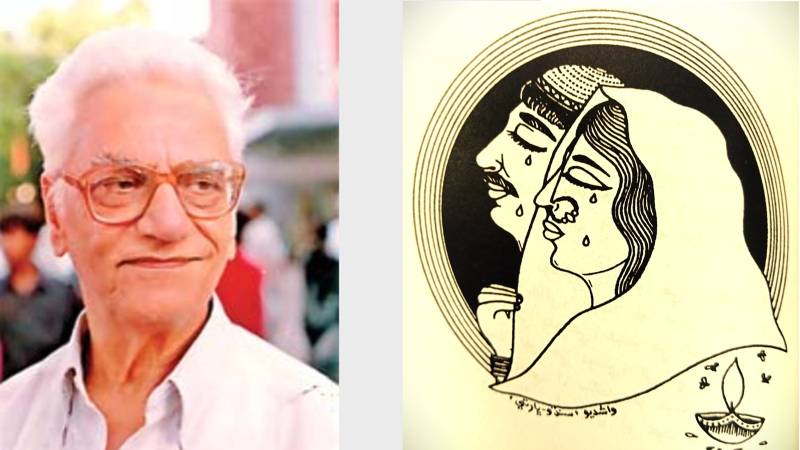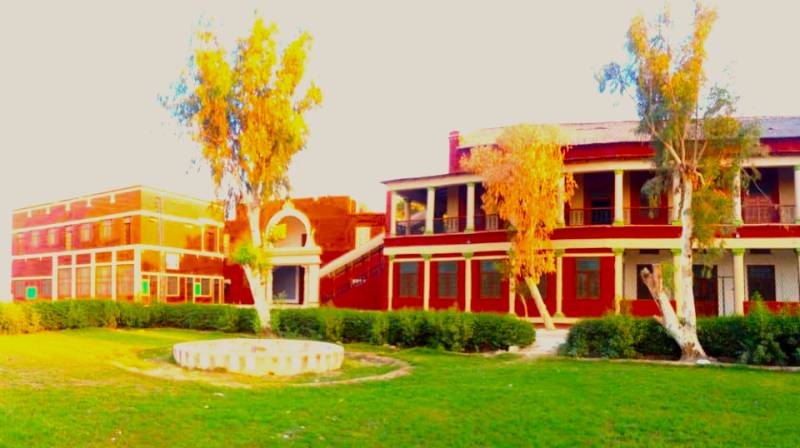
Translator's note: Last week marked the anniversary of the partition of the Indian subcontinent. On this side of the Radcliffe-drawn border, Independence Day was celebrated on the 14th of August, while across the border, it was observed on the 15th of August. Interestingly, neither side has experienced a united India—the shared festivals, dances, and the mutual love and respect between Hindus and Muslims who once coexisted in the same villages, lanes, and neighbourhoods.
The 1947 partition affected individuals in various ways—splitting families, losing loved ones, being uprooted from familiar environments, and facing the challenges of navigating an unknown and often unsafe world. However, the province of Sindh endured a unique fate. The migration of its educated, competent, and accomplished citizens to India left the region intellectually crippled.
This brief essay is a translation of an article written by the renowned journalist, historian, and politician Kewalram Ratanmal Malkani (1921–2003). Malkani was a prominent figure associated with the Bharatiya Janata Party (BJP) and had a distinguished career, authoring numerous books on politics and history. Among his works, The Story of Sindh gained exceptional popularity and was subsequently translated into the Sindhi language, further expanding its reach and impact. The present article was published in the journal Varso (Volume VII), with the title وساريان نه وسرن. The magazine was edited by Rita Shahani. The essay provides a succinct perspective on the lasting impact of the partition on the people of Sindh.
***
Visareyam Na Vesran (Attempted to forget, but failed)
Pakistan came into existence, and the Hindus of Sindh migrated to India. Approximately fifty years have passed since then. At that time, I was 25 years old, teaching economics at Hyderabad College. Now, at seventy-five, though I've lived in Delhi all these years, if someone were to ask where I belong, my immediate response would still be Hyderabad, not Delhi.
Until 1940, Sindh was largely peaceful, except for Sukkur. However, after the Muslim League’s Pakistan Resolution was passed in 1940, the country experienced growing unease, which also influenced Sindh. Yet, there was no sharp division or animosity.
On the second day of Muharram, the 10th, a day of mourning commemorating the martyrdom of Imam Husayn ibn Ali (AS), children eagerly stayed awake to witness the Duldul procession—a horse that Prophet Muhammad (SAW) gifted to Hazrat Ali(AS). The rhythmic beat of the Nagara (a large drum typically found at shrines) filled the air with a distinct cadence: da, dada, da, dada, da, dada. I once asked my mother what the Nagara was saying, and she replied, “Jhanda Kahenj? Juman Shah Ja” (These flags belong to whom? They are of Juman Shah).

On the day of Hashr (the Day of Judgment or an occasion marking the mourning of Muharram), our mother would give us paiso/tako, narehel (sliced inner shell of coconuts), and patasha (sugar candy). My sister Leela and I would then go to see the Tabot (a series of rituals commemorating the martyrdom of Hussein bin Ali bin Abi Talib) in the Pirr (a term in Sindhi describing various locations, such as an Imambargah or the space from which a Muharram procession would proceed) in front of the chawrri (a communal space, small office, or local government building where community activities took place). We would offer homage to the Tabots.
The next day at school, students—most of whom were Hindu—would debate whose neighbourhood Tabot was the most decorative and beautiful. At that time, 90 percent of students in schools and colleges were Hindu.
A Muslim lady approached us. She stopped in front of us and, with a heavy, sorrowful tone, asked, “Ada, will you too migrate?”
In the cities, it was said that 90 percent of the population was Hindu, while in the villages, 99 percent were Muslim. I passed the matriculation examination in 1939, securing the first position in Sindh. Mehru Abbasi (sister of Apa Shams Abbasi) secured the second position. Yet, we never spoke to each other. It wasn’t due to Hindu-Muslim divisions; even then, Hindu boys and girls often refrained from interacting. The idea of a Hindu boy and a Muslim girl communicating was simply unimaginable. Interestingly, a few years ago, I learned that Mehru’s younger sister, Shamus Abbasi, had visited Delhi, and we had the opportunity to warmly exchange views and reminisce about those bygone days.
I still vividly recall three incidents from the early days of Pakistan's formation, episodes forever etched in my heart. During that time, the city was enveloped in tension, suspense, and fear. As the Sindhi saying goes, "Rakas" was afoot—everyone remained silent, tending to their own affairs The Muslims referred to this phenomenon as Qiyaamt, a day of reckoning, while the Hindus termed it Perlya, the apocalypse.
One day, as I was walking down the Tilk incline with friends, a Muslim lady, without a Burqa, approached us. She stopped in front of us and, with a heavy, sorrowful tone, asked, “Ada, will you too migrate?” We replied, “There is no hope or chance to stay back.” She left, her heart heavy with disappointment.
Another day, I stood on my balcony as a Muslim brother passed by, his face alight with joy. In his hands, he held a framed group photograph, which he proudly showed to me. “In this photo,” he said, his voice tinged with wistfulness, “our village’s Seth is also shown. He was a true gentleman, and I will keep this picture close to my heart.”
A third story weighs heavily on my mind. One day, as I travelled by bus to the station, I noticed several Muslim ladies already occupying the front seats, reserved for women. Suddenly, one lady turned her head and spotted an elderly neighbour from Salawat Paro standing in the male section. Without hesitation, she rose from her seat, her eyes filled with concern, and pleaded with the old man to take her place. The old man humbly insisted that the section was meant for ladies and she was already seated, but the lady urged the Dewan to take her seat, her words filled with a gentle plea. “Please, you must sit; you might also migrate,” she compassionately insisted. I witnessed their conversation, my heart swelling with the kindness, and my eyes welling with tears The humbleness she displayed was truly moving.
I left Sindh on January 24th, 1948, and reached Delhi on January 26th, 1948. My elder brother, Professor Narayandas Malkani (1890–1974), was staying with Devdas at the Hindustan Times; he was the young son of Mahatma Gandhi.
I met with Dada, and he inquired about the situation in Sindh. I told him that Hindus, out of fear of the Mohajirs, would either wear a Jinnah cap or carry the Dawn newspaper, or any Urdu newspaper, just to give the impression of being Muslim and avoid being murdered. I also told him that the coolie had demanded Rs 100 to carry my luggage, but after some bargaining, he reluctantly agreed to charge Rs 60.
On January 30th, 1948, I visited Dada again. He informed me that just an hour earlier, he had briefed Gandhiji about the situation in Sindh. Gandhiji had assured him that he would address the situation in Sindh after that day’s Prarthana meeting. However, before the meeting could take place, Gandhi was assassinated.
Undoubtedly, Hindus left Sindh, but unlike other parts of India, the violence was comparatively minimal. In Punjab, around one lakh people—both Hindus and Muslims—were killed. In Sindh, the number of casualties was roughly 500 or even less, and these murders were not committed by the Sindhis. This restraint was perhaps due to Sindh's deep-rooted Sufi traditions.
The Indian Government had appointed Dada as the Deputy High Commissioner to facilitate the migration of Hindus from Sindh. However, the Sindh Government opposed the idea of Hindus leaving the province. Muhammad Ayub Khuhro was against Hindu migration and, therefore, did not allow Dada to travel outside Karachi. During this time, Gandhi had also written to Jinnah, stating that the Sindhi Hindus, wherever they would be settled, would contribute significantly. However, he emphasized that the migration of Hindus from Sindh would not be beneficial for the province itself.
Most Sindhis are saddened that they had to leave Sindh and often lament the troubles and problems they encountered in India. However, neither Hindus nor Muslims can be solely blamed for this suffering. It was, in fact, a calculated plan of the British Empire. The idea of partitioning India had been under consideration since the day India demanded freedom. In this regard, the Muslim League’s Pakistan Resolution of 1940 was used as a pretext. Thus, the formation of Pakistan for the Indian Muslim brethren became a "ladon of Delhi." As the saying goes, “Khayega to pachhataega, nahin khayega tab bhi pachhataega” (you will regret it whether you eat it or not).
We should not forget that the British Empire and their allies have also broken up other countries, such as Ireland, Cyprus, Korea, and Vietnam, and a similar design is now being hatched for Iraq. Despite the turbulent partition, relations between Sindhi Hindus and Sindhi Muslims have remained cordial. When Saeen GM Syed arrived in Delhi, he was warmly welcomed. He often invited me to meet with him in the mornings and evenings. I also arranged a meeting between him and the Sangh’s General Secretary, Professor Rajendra Sangh. During the meeting, Sayed presented him with one of his books.
Barely two years ago, I received a letter from a young Sindhi man named Aziz, who was employed at the Matiari Sugar Mills. He had read my book, *The Sindh Story*, and was deeply moved by the accounts of the Sindhi migration—how and why they left their homeland. In his letter, he wrote, “After reading your book and the stories of the Sindhi migration, I wept. Your longing and affection for the land have caused me to wail; the pain of the motherland supersedes all other pains.”
I replied that whatever fate had in store, it happened and could never be changed. But I assured him that while we now have three countries, we remain one people.
Jeay Sindh - Jeay Hind

